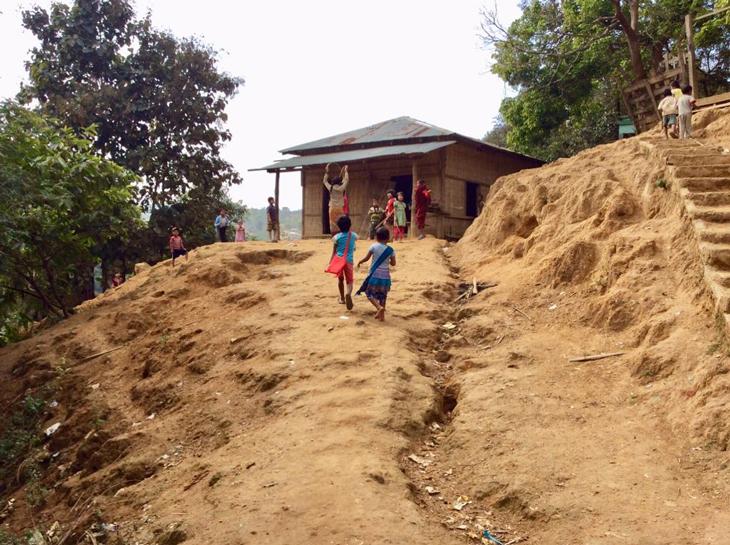1500 refugees remain in Mizoram amid fears of renewed violence in Myanmar

Around 1,500 refugees from Myanmar continue to stay put in Lawngtlai, the remote south Mizoram district, amid fears of more clashes between the Arakan Army (AA) and Myanmar’s military.
“There have been apprehensions and confusion that have stalled their return,” District Collector Dr T Arun told Catch. “They have been talking about fears of more violence that drove them out in the first place,” Arun said.

A region on the boil
Authorities, meanwhile, have been able to send back some of these refugees. “Last week, 160 people who had taken refuge in Zochachhuah village were sent back,” Arun says. “We plan to send the rest of them back in a week or two,” he informs. Zochachhuah, situated on the southern border of Mizoram, is the closest village for the rebels, and the place where the Kaladan Multi-Modal Transport (KMMT) Project enters India.
The village is at one end of the 90-kilometre stretch of NH 502A, which connects Lawngtlai town and the India-Myanmar border. Another 140 kilometres of highway is needed to connect Zochachhuah to Paletwa in Myanmar, where India has built an inland waterways port as part of the KMMT.
The strategically important Lawngtlai district shares a border with both Myanmar and Bangladesh.
The exodus of this group of refugees, numbering more than 1600, initially started following the military crackdown after an attack on the Tatmadaw (Myanmar armed forces) in early November, which the AA claimed responsibility for. According to reports in the Burmese media, as many as 11 army personnel died when the boats they were travelling in on the Kaladan river were ambushed by the AA in Paletwa, a region on the border of Chin and Rakhine states. These refugees come from the surrounding regions of Varang, Paletwa, Pakangwa, and Mulaw in Myanmar.
The Arakan Army, said to be the smallest of the ethnic armed organisations fighting the Myanmar government, operates in Kachin, Northern Shan States, Chin, and Rakhine, where most of its cadres hail from. It is part of the Northern Alliance, which includes the Kachin Independence Army. Its activities on the Chin-Rakhine border have escalated in the recent past.
Both Chin and Rakhine have the worst economic indices in Myanmar, with poverty levels much higher than the rest of the country. Rakhine, however, has been at the epicentre of Myanmar's ethnic strife. Beside the violence against the Rohingyas, which has led to the exodus of more than 6 lakh to Bangladesh, the Rakhine Buddhists have had a history of animosity with the Bamar-dominated Burmese military. The AA is at the centre of this strife.
Renewed conflict
Recently, Mrauk U in Rakhine state became the latest theatre of this conflict, when a few thousand Rakhine Buddhists commemorating the 233rd anniversary of the fall of the ancient Arakan kingdom clashed with security officials. The march saw people calling for the independence of Arakan, trying to enter a government building, and pelting stones, all of which led police opening fire. Seven people are said to have died in the firing, further complicating the ethnic tensions in Rakhine.
Meanwhile, the refugees now in Mizoram, mostly Rakhine Buddhist people, crossed over and took refuge in Zochachhuah and three other villages, Laitlang, Dumzautlang, and Hmawngchhuah, close to the border on 25 November, 2017.
Since India has no refugee policy, and the UNHCR (The UN refugee agency) does not operate in the Northeast, it is the local administration and other local bodies such as the Young Lai Association which are providing these refugees with basic amenities and healthcare. While some have been put up in schools and makeshift camps, others are said to be living with their relatives.
This is not the first time that people have crossed over from Chin State in Myanmar to Mizoram. In May 2017, the neighbouring Saiha district saw around 340 people crossing over. They were subsequently repatriated.






![BJP's Kapil Mishra recreates Shankar Mahadevan’s ‘Breathless’ song to highlight Delhi pollution [WATCH] BJP's Kapil Mishra recreates Shankar Mahadevan’s ‘Breathless’ song to highlight Delhi pollution [WATCH]](https://images.catchnews.com/upload/2022/11/03/kapil-mishra_240884_300x172.png)

![Anupam Kher shares pictures of his toned body on 67th birthday [MUST SEE] Anupam Kher shares pictures of his toned body on 67th birthday [MUST SEE]](https://images.catchnews.com/upload/2022/03/07/Anupam_kher_231145_300x172.jpg)






